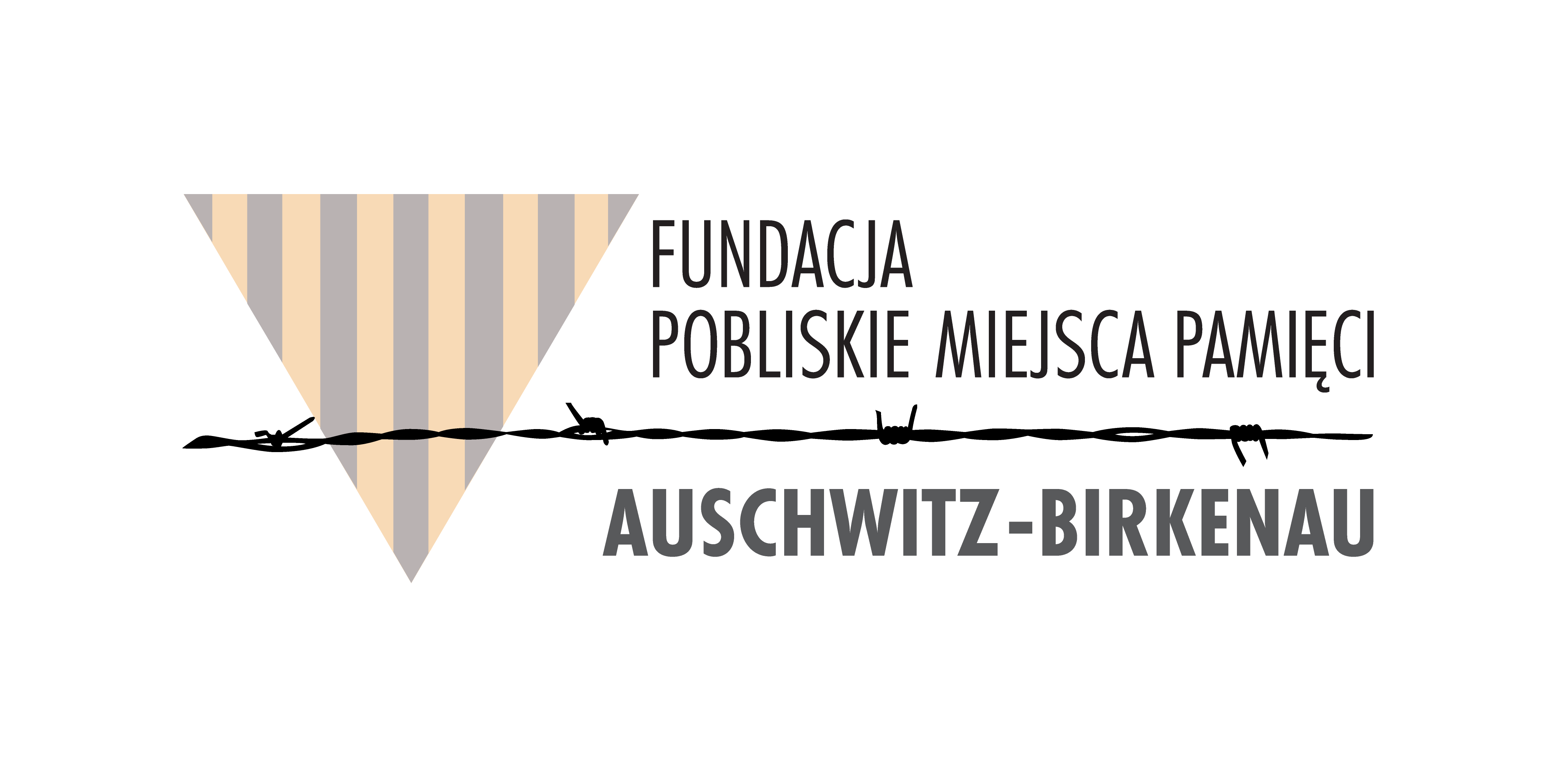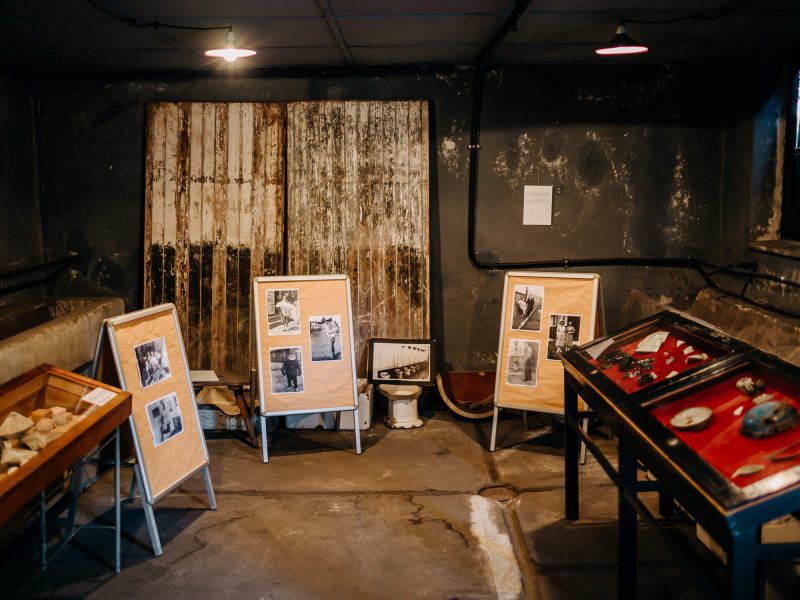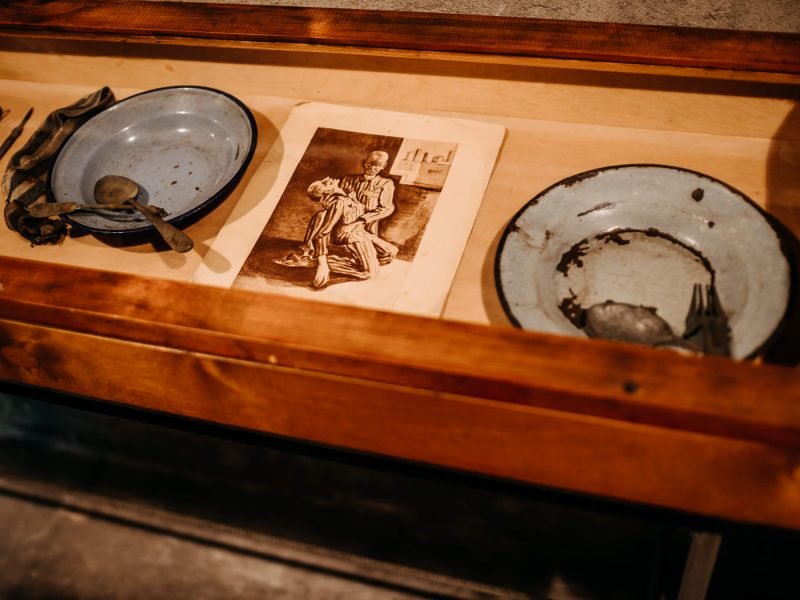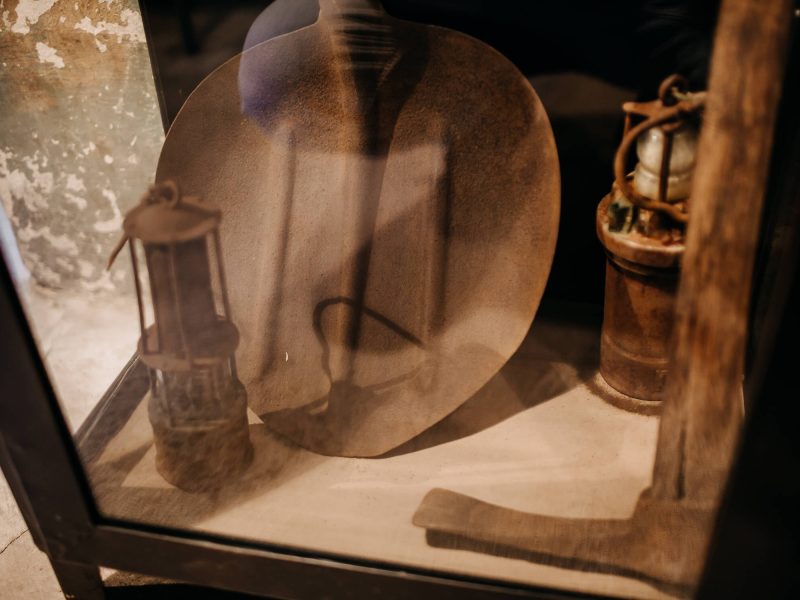Jawiszowice subcamp
Arbeitslager Jawischowitz
With the outbreak of the war, all German industry shifted to armaments production. One of the most crucial elements of this machinery was the workforce. Those conscripted into military service could no longer work in industry. To address these shortages, the Reich authorities employed forced laborers and subsequently prisoners from concentration camps.
Since 1940, the Brzeszcze-Jawiszowice mine had been under the Upper Silesian Mine Management of the Hermann Göring Works in Katowice (HGW). As a major player in the state sector, HGW was privileged in terms of raw material supplies, equipment, and labor. The Brzeszcze-Jawiszowice mine, recognized by the authorities as important for the war effort, was also subject to systematic expansion. In August 1942, to meet coal production needs, HGW signed an agreement with the Main Economic and Administrative Office of the SS, under which KL Auschwitz was to provide 6,000 prisoners for work in the mine.
The barracks previously built for foreign workers were repurposed into a camp in Jawiszowice. The first prisoners arrived in Jawiszowice on August 15, 1942, with 150 individuals being sent to work underground. This was the first instance in the history of concentration camps where prisoners were assigned to such work.
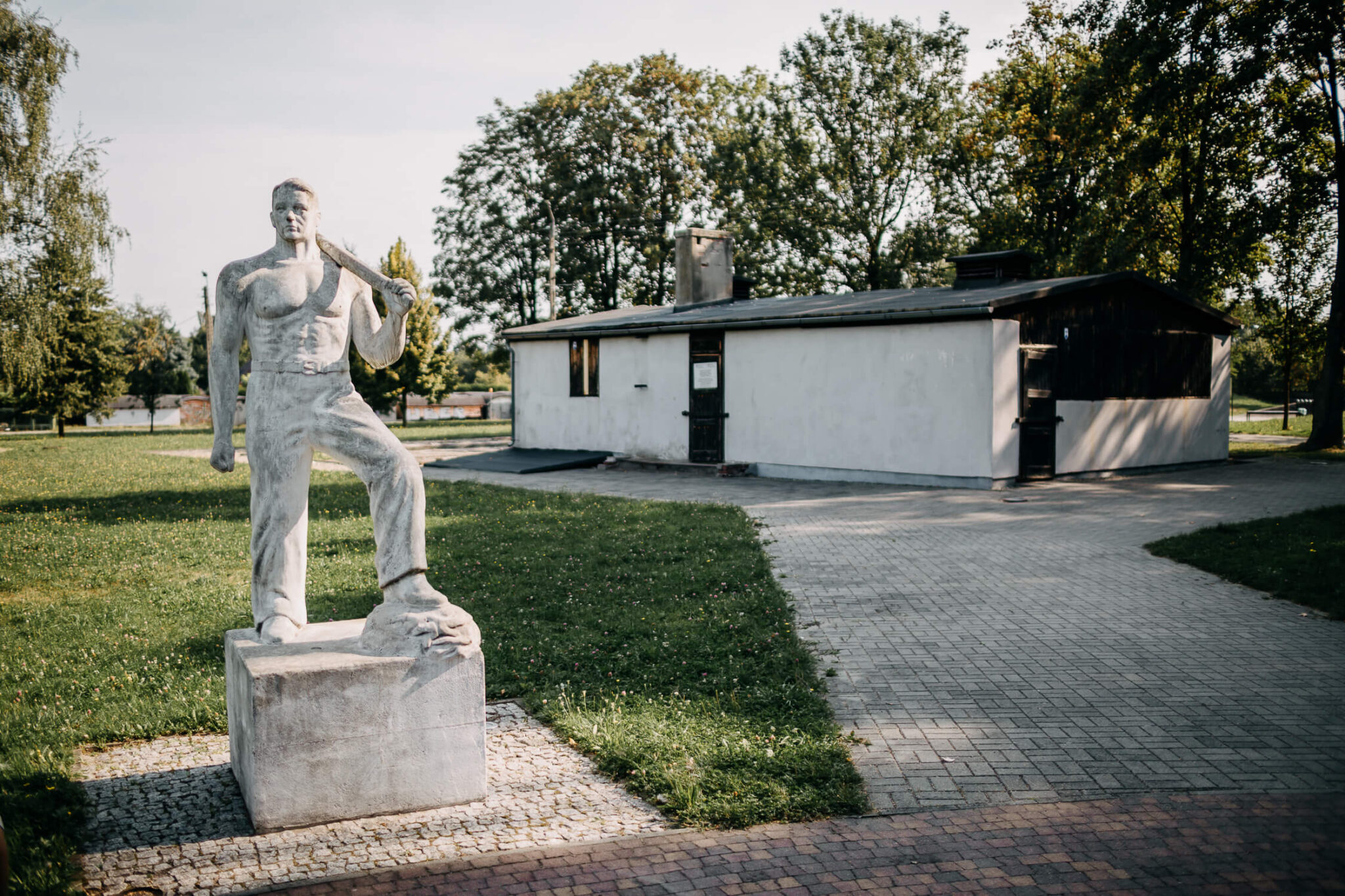
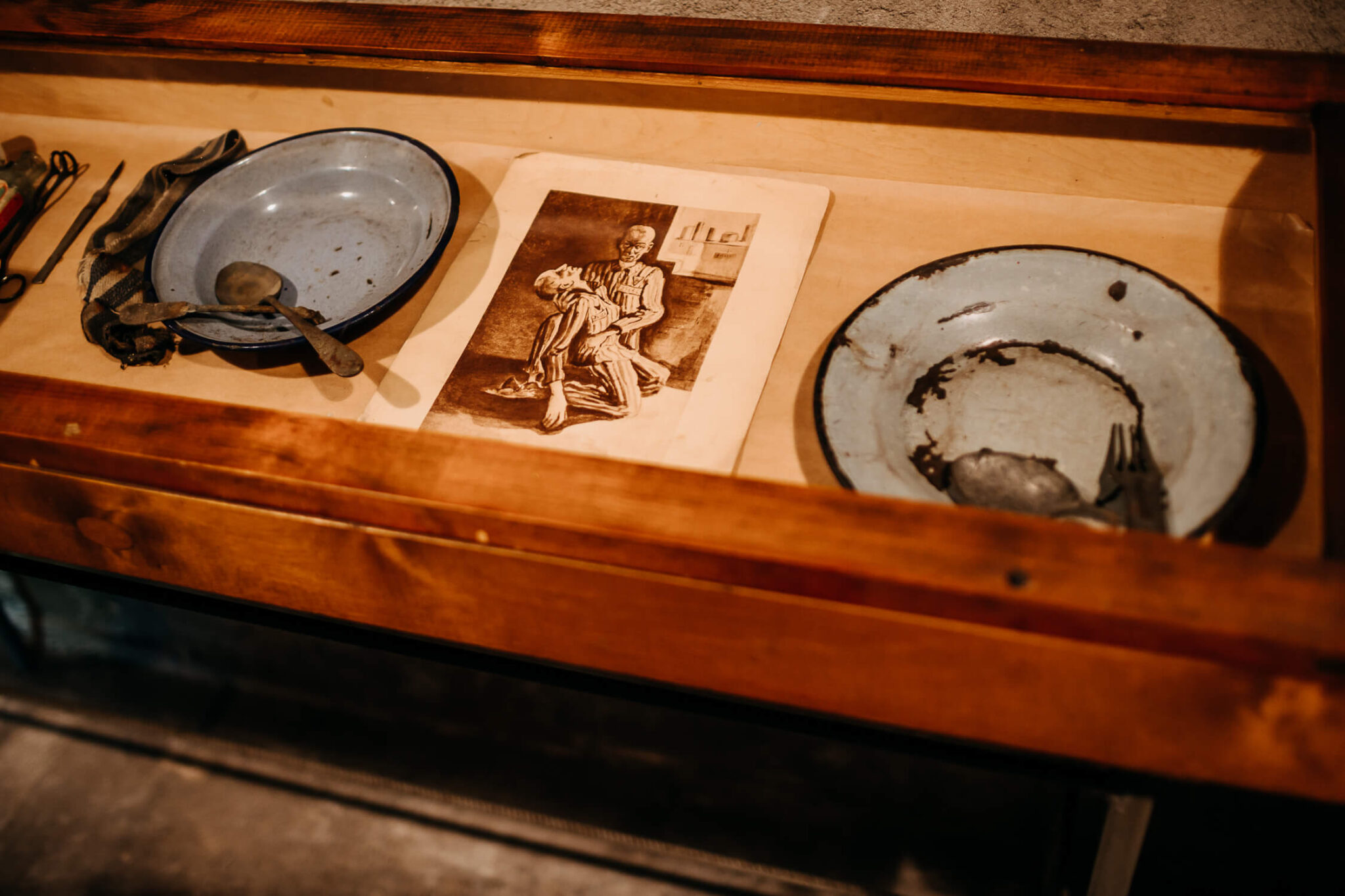
On the camp grounds, a hospital, guardhouse, office, workshops, laundry, washroom, and kitchen were organized. The camp was surrounded by barbed wire connected to electricity and watchtowers. Until November 1943, the Jawiszowice subcamp was under the command of KL Auschwitz. After the division of the Auschwitz camp into three units, the Jawiszowice camp became part of KL Auschwitz III in Monowitz.
In September 1942, there were about 500 prisoners in Jawiszowice. By July 1944, this number had increased to 2,500. At the time of evacuation, there were 1,948 prisoners in the camp. In terms of nationality, the majority were Jews, with Poles, Russians, and Germans also among the prisoners.
The Jawiszowice subcamp was considered by the prisoners to be one of the harshest, and being assigned there was regarded as a punishment. Prisoners sent there worked under extremely difficult conditions and were brutally treated by the SS guards. They were beaten and placed in the bunker (punishment cell). Public floggings were also a form of punishment, and the most serious offenses were punished by hanging in front of all the other prisoners. The barracks were drastically overcrowded, often five times their intended capacity. The only factor positively affecting the camp’s hygiene was the mandatory showering after work and changing from work uniforms into camp uniforms.
Winter was an especially difficult time for the prisoners. The penetrating cold in the barracks and lack of fuel forced prisoners to smuggle pieces of coal in their work clothing. Some prisoners working above ground used so-called “undershirts,” which were sheets of torn cement sacks, to insulate themselves from the cold. The food rations were insufficient to meet the needs of the prisoners performing such hard labor.
In Jawiszowice, as in Auschwitz I, there was an orchestra. Until 1943, its task was to provide accompaniment for prisoners leaving for work and returning from it. Later, the orchestra’s performances were limited to Sundays and holidays. The orchestra played in a location in the camp where it could be heard simultaneously by prisoners, passersby on the street, and SS guards sitting in a nearby square enjoying a beer.
The existence of a hospital in the Jawiszowice subcamp, known as the “Revier,” was somewhat illusory. The injuries sustained by prisoners while working in the mine were usually severe. The ambulatory care provided was inadequate, and the injured often died. The doctors were prisoners themselves. In the hospital, the number of sick could not exceed 6% of the prisoner population, with a maximum two-week recovery period. The hospital staff tried to assist patients requiring longer care by employing administrative tricks.
SS doctors periodically conducted selections of prisoners within the camp. The sick and exhausted, unfit for work, were sent to the gas chambers. It occasionally happened that those still alive were transported to the chambers along with the bodies of their fellow prisoners. The deceased and those selected were replaced by new prisoners.
The fate of the Jews in Jawiszowice, as in most camps in the KL Auschwitz complex, was reduced to merely surviving each day. Despite being the majority of the workforce, the camp authorities subjected them to anti-Semitic administrative measures. Whenever possible, they were housed in separate barracks, and one of the latrines was marked “Nur für Arier” (Only for Aryans). In the hospital, they were treated only by Jewish doctors.
The camp was evacuated from January 18 to 19, 1945, leaving only those unable to walk. The rest were marched in twenty-degree frost to Wodzisław Śląski. For many prisoners, this was the final march. Those who survived the harsh journey were loaded into open coal cars and transported to KL Mauthausen, KL Buchenwald, and its subcamps.
The attached photographs show original objects from the former camp infrastructure, such as a lantern and the bathhouse building, in their original locations from the period of the camp’s operation. Near the lantern are replicas of two miner statues, with the originals located at the Auschwitz-Birkenau State Museum in Oświęcim. The original statues were created by Jakub Markiel (Jacques Markiel), a Jewish prisoner of the subcamp. Markiel was born in Łódź in 1911. After graduating from the Academy of Fine Arts in Kraków, he continued his studies in Paris, where he was caught by the war. In 1943, after being arrested, he was transported to KL Auschwitz and later assigned to work in the Jawiszowice mine. Due to his artistic skills, he was exempted from mining work and assigned to artistic tasks. He created various decorative elements for the camp, including the aforementioned sculptures and decorative items for the SS guards and fellow prisoners.
Bibliography:
Auschwitz 1940 – 1945. Węzłowe zagadnienia z dziejów obozu. Tom 1 Założenie i organizacja obozu., edited by W. Długoborski, F. Piper, Oświęcim 1995.
Der Ort des Terrors. Geschichte der nationalsozialistischen Konzentrationslager, Band 5., edited by W. Benz, B. Distel, Munich 2007.
Strzelecki A., Podobóz Jawischowitz, Zeszyty Oświęcimskie nr 15, Oświęcim 1974.
Support Heritage – Create the Future
Support the Foundation
Your financial support is a drop that creates waves of change. Thanks to your generosity, we can continue our work by protecting important historical sites, conducting research, organizing educational events, and engaging the local community.
By clicking ‘Donate,’ you will be redirected to the PayPal page, where you can quickly make a donation to support the Foundation. You can also transfer funds directly to our bank account (details in the footer).
